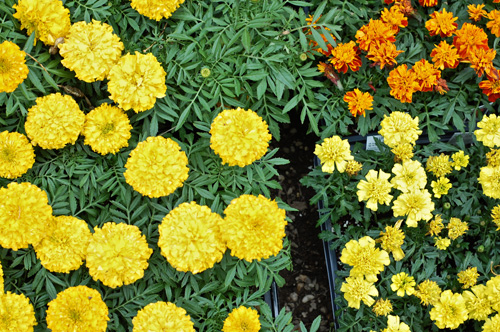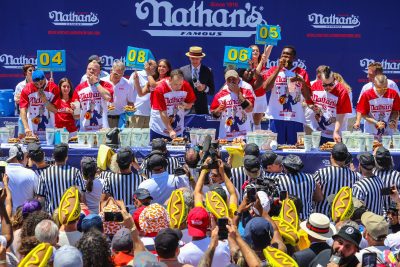Hyper-Local Textiles: Dye Your Clothes with Brooklyn Plants!


On a quiet street just a few blocks from the Barclays Center, you can find rows of marigolds, black hollyhocks, and blue cornflowers taking over what was once an abandoned lot. But you’ll never see these stems in a vase—instead, they’ll eventually make it onto a t-shirt, bed linen, or whatever other textile its owner sees fit. That’s because the buds growing in Brooklyn make up Sewing Seeds CSA, a program run through the Textile Arts Center that provides locally grown natural dyes to its members.
It all began two years ago when the project’s founder, Isa Rodrigues, started working on a small-scale garden, used mostly to fuel her own projects and as a show-and-tell space for the kids enrolled in the Textile Arts Center’s programs. Last winter, she was faced with a choice. “We were like, OK what’s next? We definitely wanted to continue the educational part, but we also wanted to bring these materials to the designers and artists we know who have already been working with natural dyes… so we thought that would just be a new adventure,” Rodrigues explains.
That new adventure turned into a full-fledged CSA. Members—12 total, although nearly 50 people applied for what was initially supposed to be 10 spots—receive three pick-ups scattered throughout summer and fall (the first was this past Saturday), as well as gain access to the Textile Arts Center’s Gowanus studio space and accompanying workshops that go through things like dye extraction and techniques. While the bulk of the pigments come from plants grown in the garden—shared with Feedback Farm, which grows produce and keeps bees—the Sewing Seeds team also includes local “treats” they’ve foraged around the city. “We found a huge, fallen branch from a plum tree on Carroll Street,” says Rodrigues, adding excitedly, “You can get really beautiful pinks with them, which are really hard to obtain with natural dyes, so it was like, Yes! Score!”
The timing couldn’t be better; just as Brooklynites have become focused on eating and dressing locally, so too have creative types been looking to source their materials in a natural, ethical way. “I think part of the appeal is that it’s produced in Brooklyn and that it’s something very tangible that people could go into the garden and see where those plants were growing,” notes Rodrigues. “But also, I think it’s the excitement because it is something new. For people who are new to natural dyes, it’s something that they want to be involved with, in the same way that you want to be involved in slow foods or eating locally; you’re more conscious about the materials that you wear and the products you use in artwork,” she adds.
Those who weren’t able to join this year can still visit the garden—which is open to the community throughout the week—and take part in the free lectures and workshops slated to take place there later this summer. “Right now I’m just concerned with bringing people to the garden—I want it to be a resource for people,” says Rodrigues. So far, that seems to be happening; as she put it, “It’s really nice when someone just walking by stops in and asks us what’s up. People learn about something that they didn’t even know existed. To not only reach out to people who already know about natural dyes and textiles, but to also reach out to people that are totally clueless, that’s the part that is really exciting.”
You might also like 




















